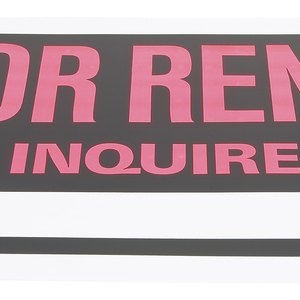
You may only deduct expenses from your rental property in the proportion that you used it to generate rental income at a fair market price. For full-time rental properties, this would be 100 percent, but personal use of the property changes this ratio. To further complicate matters, if your personal use qualifies the property as a "dwelling unit used as a home," your deductible expenses are capped at the amount of rental income, even if you incur a net loss.
Rental Expense Ratio
Total all the days the rental property was rented at fair market value, which is the average rental for comparable properties in the area. If the property was on the market but not rented for a time, these days do not count as rental days. If you personally used the property while it was rented at fair market value, this still counts as a rental day.
As an example, say the property was on the market all year but it was only rented for 180 days. During that time, the tenant allowed you to stay in the rental property for seven days while he was on vacation, but you did not refund any of the rent. Also, you allowed a friend to stay at the property rent-free for 30 days. The number of rental days would be 180, because you received a fair market price during those days. The seven days you stayed at the property and the rent-free days your friend used the property do not change this number.
Add the total number of days the rental property was used. In the example, the property was rented for 180 days and used by your friend for 30 days, so the total usage was 210 days. The 155 days of vacancy do not factor in, nor do the days you used the property while it was rented at a fair market price.
Divide the rental days by the total days in use, as figured in the preceding step. This is the fraction of deductible rental expenses. In the example, the ratio would be 180 divided by 210, which gives you 0.857, or 85.7 percent.
Determining "Dwelling Unit Used as Home"
Add the number of days the rental property was rented at a fair market price but not personally used. If a tenant allowed you to use the property, even while paying fair market value, these days do not count toward these rental days. In the previous example, the property was rented for 180 days, and you personally used it for seven of those days. Therefore, the total number of rental days would be 173 days.
Divide this number by 10 and compare it to 14. Use the larger of the two numbers. In the example, 173 divided by 10 gives you 17, which is larger than 14. Therefore, you would use 17 for this determination.
Add the total number of days the property was personally used. If the property was used by someone at a rate below the fair market value, it counts toward the personal days. In the example, your friend used the property for 30 days and you used it for 7 days. The total personal use is 37 days.
Compare this figure with the determination value calculated in Step 2. If the number of personal days exceeds that number, the property is treated as a "dwelling used as a home," and your deductions cannot exceed the amount of rental income. In the example, 37 days is larger than 17 days, so it qualifies.
References
- IRS.gov: Personal Use of Dwelling Unit (Including Vacation Home)
- Internal Revenue Service. "Know the tax facts about renting out residential property." Accessed May 9, 2020.
- Internal Revenue Service. "Topic No. 415 Renting Residential and Vacation Property." Accessed May 9, 2020.
- Internal Revenue Service. "Real Estate (Taxes, Mortgage Interest, Points, Other Property Expenses)." Accessed May 9, 2020.
- Tax Foundation. "A Tradition Unlike Any Other: The Masters Tax Exemption." Accessed May 9, 2020.
- Internal Revenue Service. "Publication 527: Residential Rental Property." Accessed May 9, 2020.
- Internal Revenue Service. "Publication 527: Residential Rental Property." Accessed May 9, 2020.
- Internal Revenue Service. "Publication 527: Residential Rental Property (Including Rental of Vacation Homes)," Page 17-18. Accessed May 9, 2020.
- Internal Revenue Service. "Publication 527: Residential Rental Property." Accessed May 9, 2020.
Writer Bio
C. Taylor embarked on a professional writing career in 2009 and frequently writes about technology, science, business, finance, martial arts and the great outdoors. He writes for both online and offline publications, including the Journal of Asian Martial Arts, Samsung, Radio Shack, Motley Fool, Chron, Synonym and more. He received a Master of Science degree in wildlife biology from Clemson University and a Bachelor of Arts in biological sciences at College of Charleston. He also holds minors in statistics, physics and visual arts.

